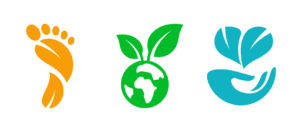
Time to break out your knitwear
As the weather takes a turn for the colder, keeping warm becomes more important and with rising energy prices, adding a layer of knitwear is a great way to remain warm without switching on the heating.
Jumpers are amazing, comfy and like an old friend and the knitting that makes them has been around for thousands of years.
Knitting is the process of creating loops of threads that interlock in rows, through the use of yarn and special knitting needles and until industrialisation was done by hand.
Jumpers like other clothing items are part of the fashion industry.
Fashion is second only to the oil industry in terms of global pollution, according to the UN Conference on Trade and Development.
But it wasn’t always this way.

The History of Knitwear
Nobody has ever been able to pinpoint the precise day that a knitted item was first produced. However, the Middle East is said to be the origin of knitting.
Cotton, wool, and silk were some of the natural fabrics used to make ancient knitwear.
The first woollen item discovered is a pair of Egyptian socks from the third to the fifth century AD. They were created using the labour-intensive technique known as “nail binding,” which is more closely related to sewing than knitting.
The first piece of double-needle knitting that is similar to modern knitting found was created in North Africa between the years of 1100 and 1300.
Part of the problem with the history of knitwear is that knitwear is easily perishable and does not last, so archaeologists rarely find any remnants and ancient historians don’t seem to have found knitting something to write about.
Knitting eventually became a trade that evolved and grew.
During the industrial revolution, European colonists and adventurers spread it among many countries.
The first knitting machine was created in 1589.
The stocking frame or knitting machine, which was invented by the Englishman William Lee, was the first machine to replicate the hand motions of a knitter.
Now jumpers are globally mass-produced knitwear, thanks in part to William Lee and many are no longer always made of natural materials.

The environmental impact of your jumper
Now that jumpers are mass-produced at a serious scale, and their supply chain and materials are a real cause for concern.
The manufacture of wool is a nightmare for the environment.
Wool is one of the five fabrics with the highest environmental impact, according to the most current “Pulse of the Fashion Industry” survey.
Similar to cattle ranching, sheep farming produces significant amounts of greenhouse gas emissions that contribute to climate change.
Costly resources are also used up by the wool industry and environmentalists are highlighting sheep farming’s detrimental effects on the environment more and more.
To make space for sheep to graze, land has been cleared and trees cut down, which causes increased soil salinity, erosion, and reduced biodiversity.
Some jumpers aren’t made from natural fibres anymore and are now made from environmentally damaging polyester or acrylic and are often dyed using polluting chemicals.
In fact, a study by Plymouth University found that acrylic was responsible for releasing nearly 730,000 microfibres per wash, these plastic microfibres end up polluting our oceans, killing wildlife.

How to think sustainably about jumpers
So what can you do to make your energy-saving, cuddly jumper more sustainable and what should you look for?
There are many ways to enjoy knitwear in a way that is kind to the world, and some labels are making it even easier to switch, from vintage shopping to purchasing items produced from dead yarn.
You can look for brands that have a fully transparent and traceable wool supply chain which goes right back to the sheep.
Also, you can check how brands are using resources and opting for less harmful materials such as recycled polyester.
You should also look at packaging and transportation methods and if you can, shop for brands made locally or in the same country.
Cutting back on excessive consumption is just as important as shopping sustainably, and another way to be more sustainable is to choose a brand that is made to last and will be part of your winter wardrobe year after year.
So now you know what to look for, Play It Green has done some research into sustainable jumper brands and picked out three of our favourite ones.

Our favourite sustainable jumper brands
The first brand we love is Finisterre, an ethically made and sustainable outdoor clothing brand, selling beautiful ethical jumpers and sweaters, made from natural fibres.
Finisterre is BCORP certified and since it was founded by Tom Kay in 2003 has been committed to a deep belief: to make truly exceptional products in a more responsible and transparent way.
You should check out their latest sustainable men’s and women’s knitwear on their website.
Everything is made with sustainability in mind, from materials to packaging and it is all made to the highest standards so your jumper will last and last.
The second brand we love is Damson Madder.
The London-based fashion brand, launched by founder, Emma Hill just before the first lockdown, has developed a cult following as a result of social media.
Its designs are effortlessly cool and aim to make sartorial trends that are economical, ethical, and sustainable.
The company’s knitwear ranges from vests to knitted flares and is constructed from recycled cotton and polyester materials.
The final brand we love is Thought who create practical fairtrade apparel with lovely patterns that are produced from bamboo, hemp, or organic cotton.
Founded in 1995 by John and Rachel Kelly.
Thought is committed to creating clothing from materials that are always clean and always planet friendly.
They have a wide variety of ethically sound jumpers and we love their women’s collection which has a wide range of designs and colours.
To help you buy a sustainable jumper and save some money, simply sign up to Thought’s mailing list.
Whilst you would normally receive a 15% discount on your first purchase, at the moment you can save a whopping 20%!

That’s it for this week.
Hopefully, you learned something new and increased your awareness of sustainability, consumption and how to buy more sustainably.
If you are enjoying your journey and our content, please feel free to share on your social media to help spread the word and help to create positive, sustainable change!




